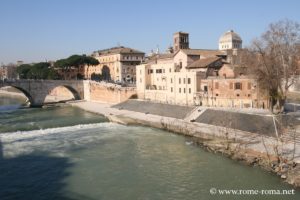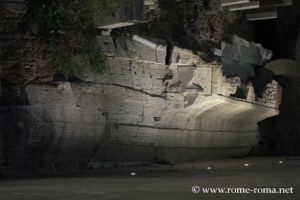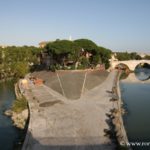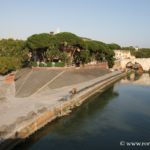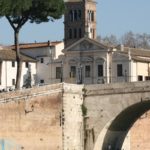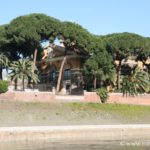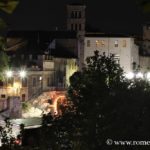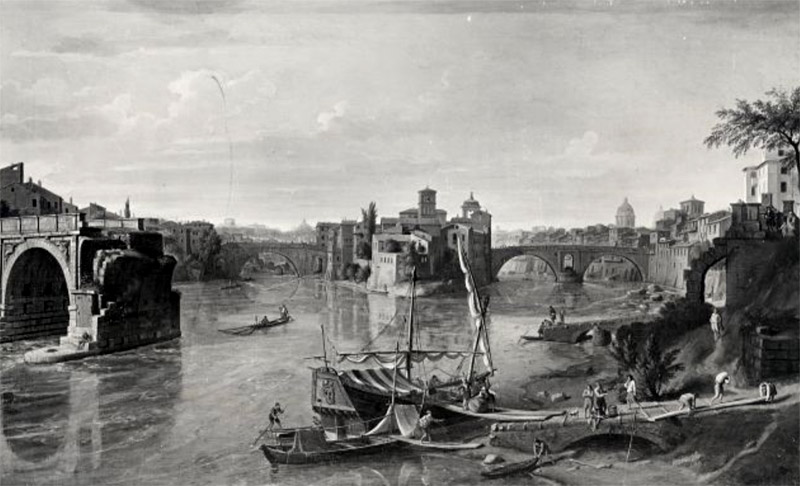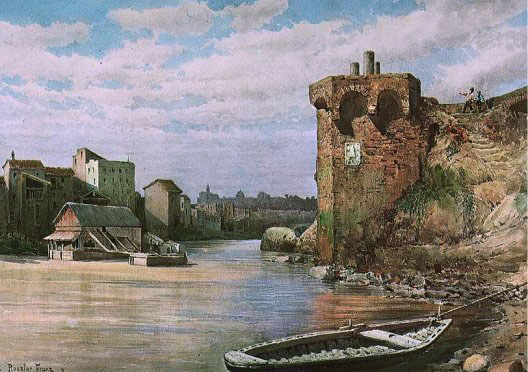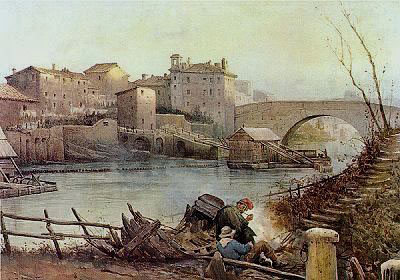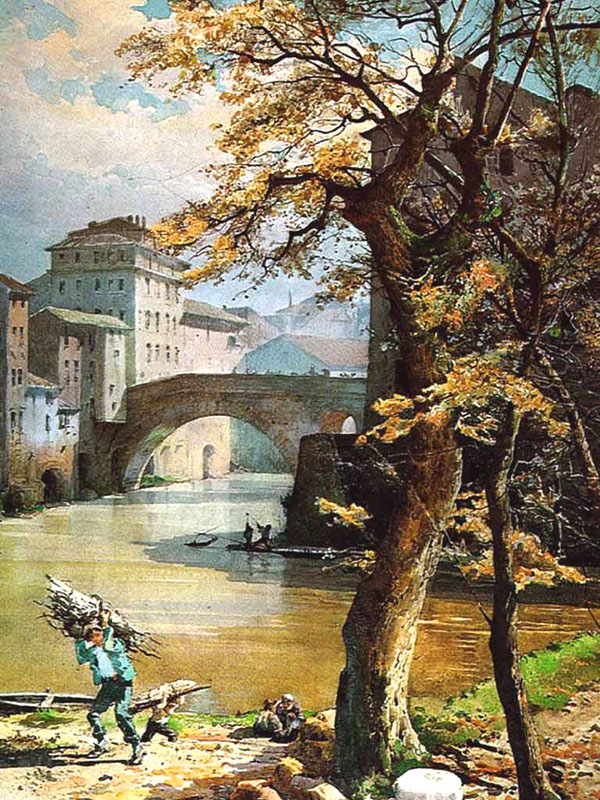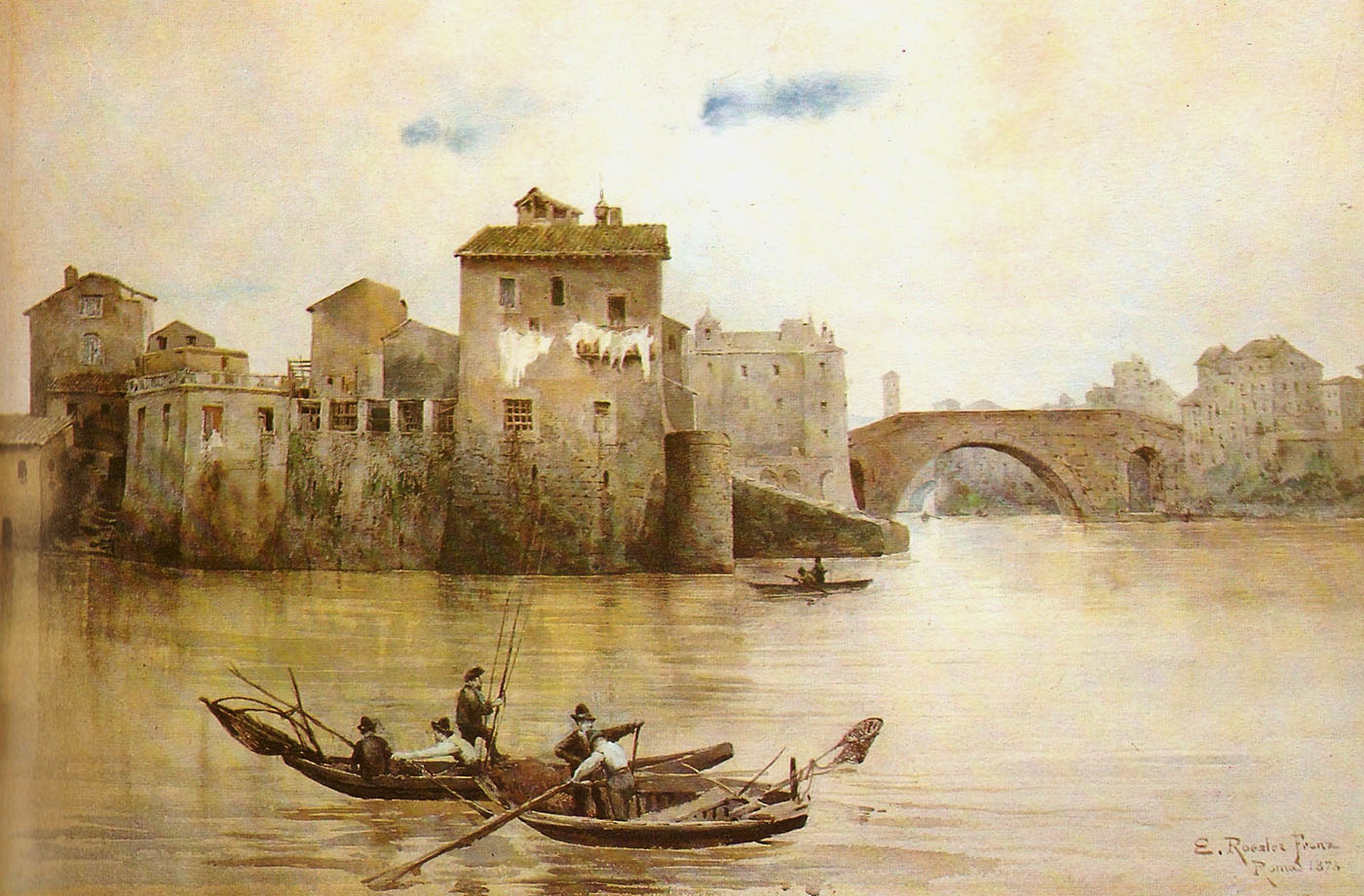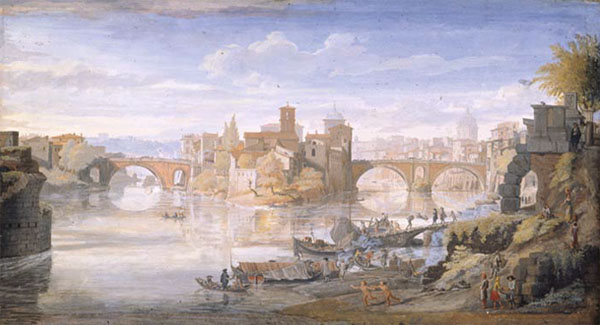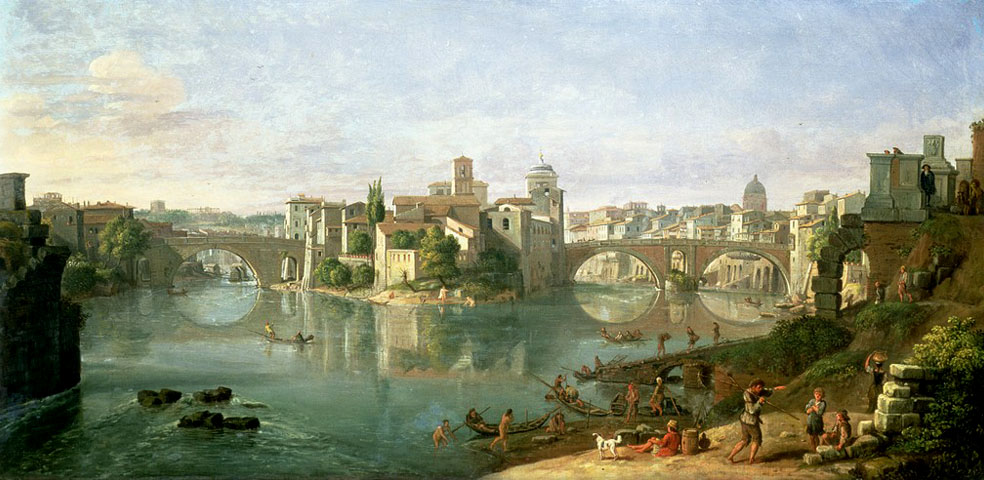Tiber Island is the only island on the Tiber River along its passage through Rome. It measures nearly 300 meters and is connected to the banks by two ancient bridges, between Trastevere and the Jewish Ghetto.
This unique place is a beautiful corner of Rome, peaceful and charming between the river waters, with its ancient buildings, a history interwoven with legends, its bridges, and in summer its bars and the open-air cinema of the Isola del Cinema.
Things to See and Do on Tiber Island
- Basilica of San Bartolomeo all’Isola
Built on the remains of the Temple of Aesculapius, this church houses the relics of Saint Bartholomew and a Romanesque cloister from the 12th century. In front of the church, a small shrine recalls the “infamous column”. - Traces of the Temple of Aesculapius
Built in the 3rd century BC, it was dedicated to the god of medicine. The island, shaped like a ship, symbolized the voyage of the sacred serpent brought from Epidaurus. It was arranged to resemble a trireme, with a sculpted prow and an obelisk at the center as its mast. - The Pons Fabricius and Pons Cestius
The first was built in 62 BC; it is the oldest bridge in Rome still in use, linking the island to the city center. The second, erected in 46 BC, connects the island to Trastevere. It was restored in the 4th century and during the Middle Ages. - Fatebenefratelli Hospital and San Giovanni Calibita
Founded in the Middle Ages, this hospital is still in operation and has played an important role in the history of Roman medicine. San Giovanni Calibita is a small church integrated into the hospital, located on the site of ancient sanctuaries.
Things to Do:
- Walk along the Tiber
Enjoy the riverbanks for a peaceful stroll with splendid views of the river. - Attend an open-air film
In summer, the island hosts the “Isola del Cinema” festival, offering outdoor screenings. - Guided tours
Guided tours are available to explore the island’s history and legends in depth.
An Island Marked by the History of Its Sanctuaries
According to legend, the island emerged in 509 BC when Tarquin the Proud, the last Etruscan king of Rome, was expelled by the people weary of his tyranny. During this revolt, the king’s massive grain stores were supposedly thrown into the Tiber, forming a small island.
The island is in fact a natural tuff crossing, like the nearby Palatine Hill, on which natural alluvial deposits accumulated.
Another important legend concerns the island. Rome was struck by a terrible plague. In 293 BC, after consulting the Sibylline books, priests and leaders sent a mission to Epidaurus, where stood the sanctuary of Aesculapius, the Greek healing god, to ask him to intercede for Rome. When they reached the temple, a great serpent, symbol of the god, emerged from the sanctuary and boarded the Roman ship. On the return, the reptile leapt from the vessel to take refuge on the island. It was then decided to build a temple to Aesculapius there, which was inaugurated in 289 BC. Later, the island was shaped like a trireme in memory of the ship returning from Epidaurus, with a stern, a prow, and an obelisk at its center as a mast, and it was during the 1st century BC that the two stone bridges were built.
The Temple of Aesculapius was annexed to the first hospital of Rome, whose intense activity continued through the Middle Ages and up to the present day.
Before the construction of the Tiber embankments in 1870, on both sides of the island there were for centuries mills on rafts using the river’s current to grind flour.
Since 1995, every summer the Isola del Cinema has taken place, with cultural events and screenings of classic films, recent releases, and premieres from Italian and international cinema.
Overview of the Buildings of Tiber Island
It was on the remains of the Roman Temple of Aesculapius that the church of San Bartolomeo all’Isola was built, preserving a 12th-century Romanesque bell tower and, near the main altar, the ancient hollow medieval column that served as a well, probably connected to the spring.
The Pons Fabricius, built in 62 BC, has largely been preserved, although the floods of the Tiber required several restorations, including a small arch to facilitate the water flow. In the Middle Ages it was called the “Bridge of the Jews” due to its proximity to the Ghetto.
The Pons Cestius, erected in 46 BC, was largely rebuilt toward the end of the 19th century.
Near the island, the Ponte Rotto (originally Pons Aemilius), crossed the Tiber further south since the 3rd century BC.
The prow of the boat-shaped island is still partly visible today, with travertine blocks covering the peperino interior, decorated with a depiction of Aesculapius with his serpent (see previous photo).
The obelisk was replaced in 1500 by a column that later disappeared, and was subsequently replaced by a shrine in the 19th century.
On the northern part of the island stood several Roman sanctuaries, over which developed the Fatebenefratelli Hospital with its church of San Giovanni Calibita.
Between the church of San Bartolomeo and the Tiber stood the medieval Pierleoni palace, of which remains the “Tower of the Maiden” or Caetani Tower at the head of the Pons Fabricius.
→ Also read the detailed article on the buildings of Tiber Island
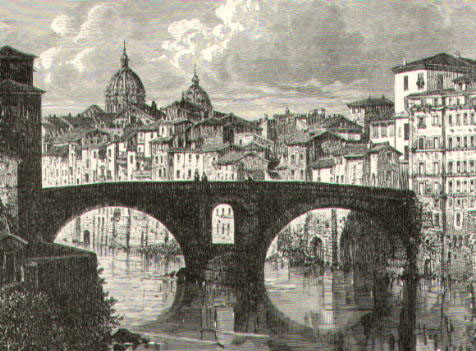 Bridge and Ghetto, view from the past
Bridge and Ghetto, view from the past
On the Tiber island
Photo Gallery
- Tiber Island
- Tiber Island
- Tiber Island
- San Bartolomeo
- San Bartolomeo
- Remains boat of Tiber island, temple of aesculapius
- Pons toward TIber island
- Fatebene Fratelli Clinic
- Tiber Island with the Rotto bridge
- Tiber Island by night and Ponte Rotto
Map of Tiber Island
If you see this after your page is loaded completely, leafletJS files are missing.
Ancient views in art
Information
| Tiber Island 00186 Rome |
Sources and further information |

